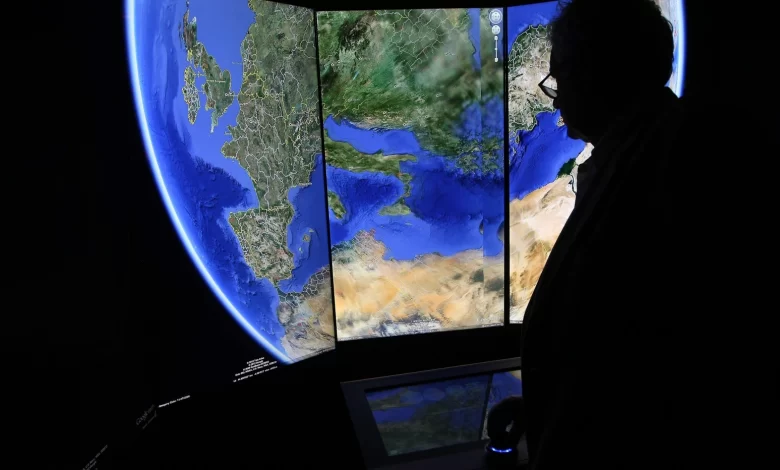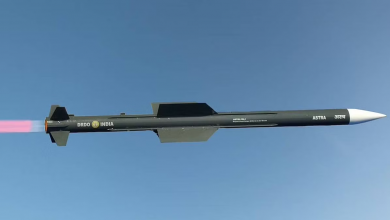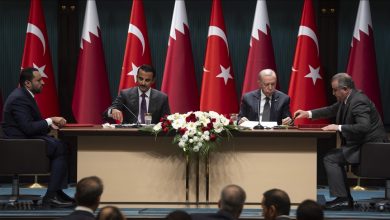Analysis: Global order continues to reshape in 2023

As the year ahead will spell challenges in coping with unparalleled unpredictability across the world, it is not yet clear how the forces of both economic globalization and international political competition will play out
During the post-World War II period, we had a relatively stable world order. Then came the bipolar world with the Cold War between the two poles. With the disappearance of one of the poles – when the Soviet Union disintegrated into 15 states in the early 1990s – the world order started to be perceived as a unipolar world. However, this idea was challenged from the beginning, and now it appears that we are far from a unipolar world.
In the 1990s, liberal ideas were also popular. With the demise of the communist Soviet Union, the world’s economic and political-ideological climate promoted liberal democracy and neo-liberal economic models. In the 1990s, the world was reshaped under United States’ leadership, which late American columnist Charles Krauthammer called “the unipolar moment.”
The U.S. promoted a “liberal hegemony” by supporting liberal democracies, liberal economic systems and liberal international economic institutions. During this period, advocates of neoliberal economic policies, namely the International Monetary Fund (IMF), the World Bank and the World Trade Organization (WTO), effectively increased their influence.
End of history… Is it really so?
Francis Fukuyama, an American political scientist, described this period as the “end of history” since the world’s ideological climate evolved into the “best” available political and economic systems. He and several liberal scholars expected that liberal democracy, Western-defined human rights and free-market-based economic systems would spread everywhere.
Increased economic globalization and the interdependencies it created also supported this idea. World peace would follow these developments since liberal democracies do not fight one another. Issues such as human rights violations, nuclear proliferation and terrorism were supposed to disappear from the world agenda.
In the meantime, NATO and the EU expanded to include former communist countries of Eastern Europe. The Western world expected Russia to evolve into a liberal democracy in the West’s image, but it did not happen. Former Soviet Socialist republics Georgia and Ukraine showed interest in joining these organizations, but Russia opposed them. The U.S. wanted China to turn to democracy in the 1990s, but it remained under the rule of the communist party. By the early 2000s, it was clear that a “liberal hegemonic” order was not emerging.
The realist school of thought has always challenged the aforementioned liberal ideas. According to realism/neorealism, self-interested states are the major actors and the power struggle between them shapes the international order. In fact, by 2010, Russia and China started to reassert themselves as global powers and the unipolar world started to give way to a multipolar order. The promotion of liberal ideals was possible in the unipolar period, but it faced challenges in a bipolar or multi-polar world.
Liberal U.S. policy failed in 2000s
Liberal-oriented American foreign policy failed on multiple fronts in the 2000s. “Liberal hegemony” supported by both democratic and republican administrations was not working. In addition to the re-emergence of Russia and China as rival powers, the world had multiple trouble spots, which were not resolved under U.S. hegemonic leadership. The American presence in Afghanistan could not stabilize the country. In 2003, Iraq was occupied to bring democracy, but Iraqi politics remain unstable. North Korea acquired nuclear weapons.
Syria and Yemen faced long periods of civil war, divided into the sphere of influence areas of external powers. Nationalism has been on the rise with conflicting claims of territories in different parts of the world.
Former U.S. President Donald Trump’s rise to power in 2016 was partly related to the failures of liberal policies. Trump said “America first,” and did not show any interest in spreading democracy or neo-liberal trade policies or creating trans-Atlantic and trans-Pacific mega free trade zones, or expanding NATO. He did not like international organizations, the U.N., the IMF or the WTO. He rose in power as the antithesis of “liberal hegemony” in the U.S.
Even though Trump lost the 2020 elections, his ideology and support base has not disappeared.
It is now clear that the world’s geopolitical future is not going to be formed in the West’s image, but what will be the future is a debate. The idea of a global hegemon and unipolar world lost its support. It is clear that we are moving to a multipolar world.
What will be the major power centers, or “poles,” and the defining characteristics of this emerging multipolar world? Will the dynamics of the multipolar order be different from those of the 19th century, for example? We are living in a technologically advanced and increasingly interconnected global world. Will this make a difference? Will the open-market global economic order survive the new system?
These and similar questions are yet to be answered.
In our emerging multipolar world, the U.S., China and Russia seem to be the major global military power centers, even though the U.S. is still the dominant power. Multiple other countries have risen to regional power status, not closely allying themselves with these global powers. The U.S.-China competition in Asia and the U.S.-Russia competition in Ukraine and Europe at large are examples of power struggles among the major powers. These power struggles are shaping our world. Are we returning to “great powers” politics?
In the meantime, the Russia-Ukraine war has become an arm wrestling match between Russia and the West (the U.S. and the EU). How this war will end and what will be the ultimate settlement will have a huge impact on the emerging world order.
Unlike Russia, China has become an economic power center. Beijing did not follow liberal economic policies closely, and in some ways, Chinese economic policies can be classified as mercantilist. Nonetheless, China hugely benefits from the liberal international trade system, created and institutionalized under the U.S.’s “hegemonic” leadership, and administered by the WTO.
Trump objected to Chinese trade policies due to an uneven distribution of free trade gains between the U.S. and China. The Trump administration attempted to follow protectionist policies toward China and China also retaliated. The “trade war” between these two powers subsided during the administration of U.S. President Joe Biden, but it might reemerge in the future.
World economy
The world economy involves three major marketplaces. One of them is East Asia, where China is becoming the dominant economic power, surpassing Japan. The second one is North America, where the U.S. is dominant. The third one is the EU, where Germany is the largest economy, but the EU has several large economies.
Even though there has been some regionalization of international trade, all major economies of the world continue to operate on a market-based economic system. Economic (and also political and cultural) globalization continues as transportation and communication technologies further connect the world. Many developing countries adopted Asian-style, export-oriented economic models in the 1980s, after the failure of communism and the Import Substitution Industrialization (ISI) model. Thus, market-based economic systems dominate the world; the economic systems of most countries increasingly have become similar.
However, despite increased economic interdependencies, the global political structure is still shaped by sovereign states’ conflicts and cooperative behaviors. As the U.S. has been losing its “liberal hegemon” status, the world’s political theater has been filled with multiple trouble spots – from Ukraine to the South China Sea, from Syria to the Korean Peninsula – where we can observe power competition of sovereign states due to their conflicting interests. The Ukraine crisis is currently the most dangerous demonstration of this competition.
According to some, China could become the next hegemon in a few decades, due to its growing economic and military power and its huge population. India is also a candidate to become a dominant power. The economic gravity of the world is increasingly moving to Asia, which contains more than half of the world’s population, and the political center may gradually move to Asia as well. The future may bring an India-China power struggle in Asia, even though it is currently a U.S.- China power struggle.
Author Michael Beckley in his article titled, “Enemies of My Enemy: How Fear of China is Forging a New World Order” in Foreign Affairs (March/ April 2022) claimed: “The Chinese threat could usher in the most consequential changes to global governance in a generation.”
“As China seeks to burn down what remains of the liberal order, desperate actors are starting to join forces to roll back Beijing’s power … In the process, they are reordering the world… The clash of systems between China and the U.S. will define the 21st century and divide the world,” he added.
Conflicts and competitions among the major powers, supplemented by relatively smaller-scale conflicts and competitions in each region, keep the world a dangerous place with the potential for big wars.
Of course, this is not in harmony with economic globalization and interdependencies. For example; on the one hand, China and the U.S. are the biggest trading partners. On the other hand, they are in a military power competition in Asia. How the forces of economic globalization and the forces of international political and security competition will play out remains to be seen.





